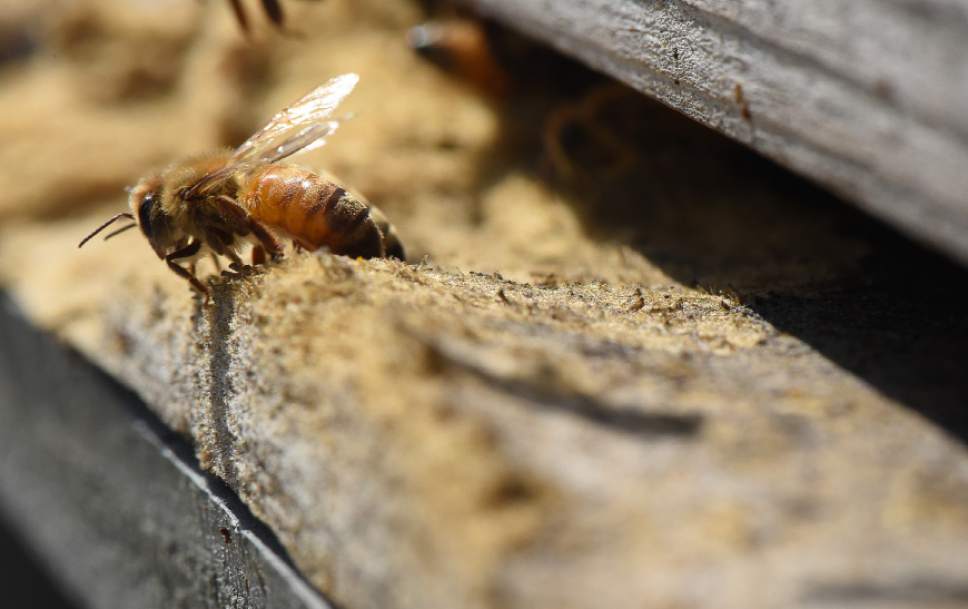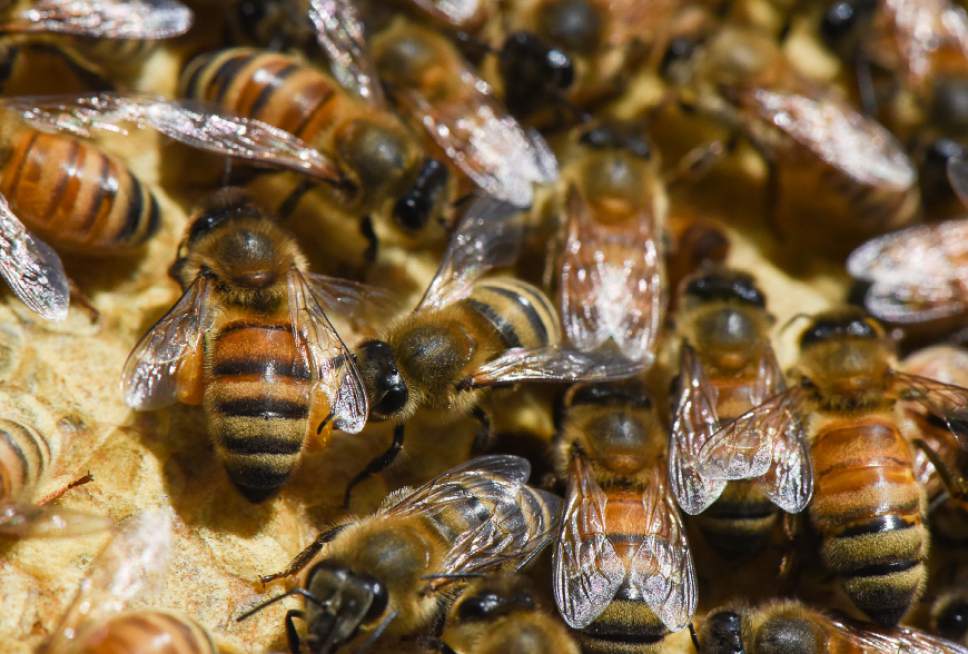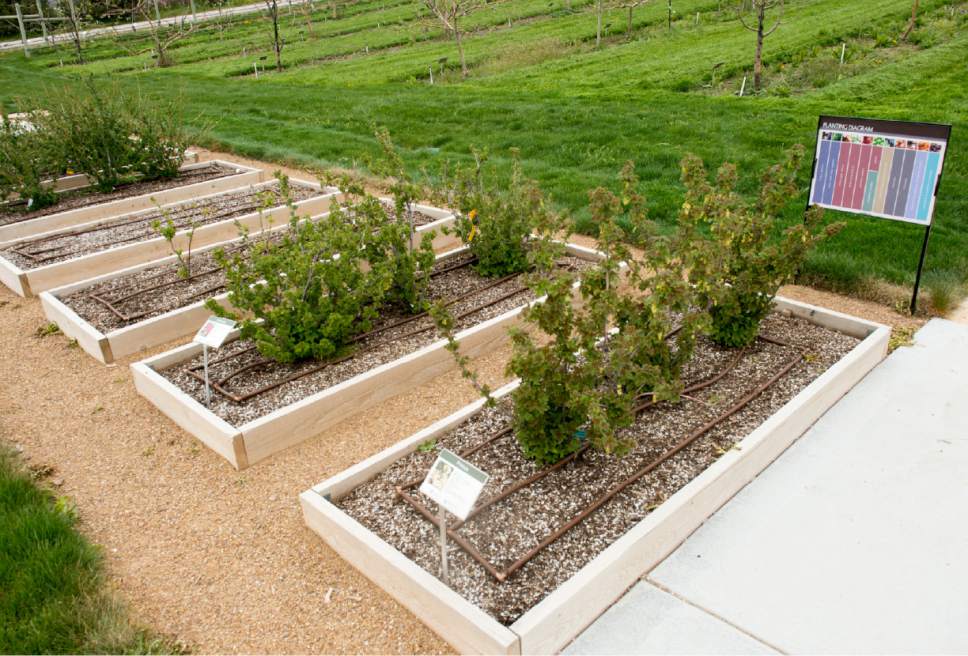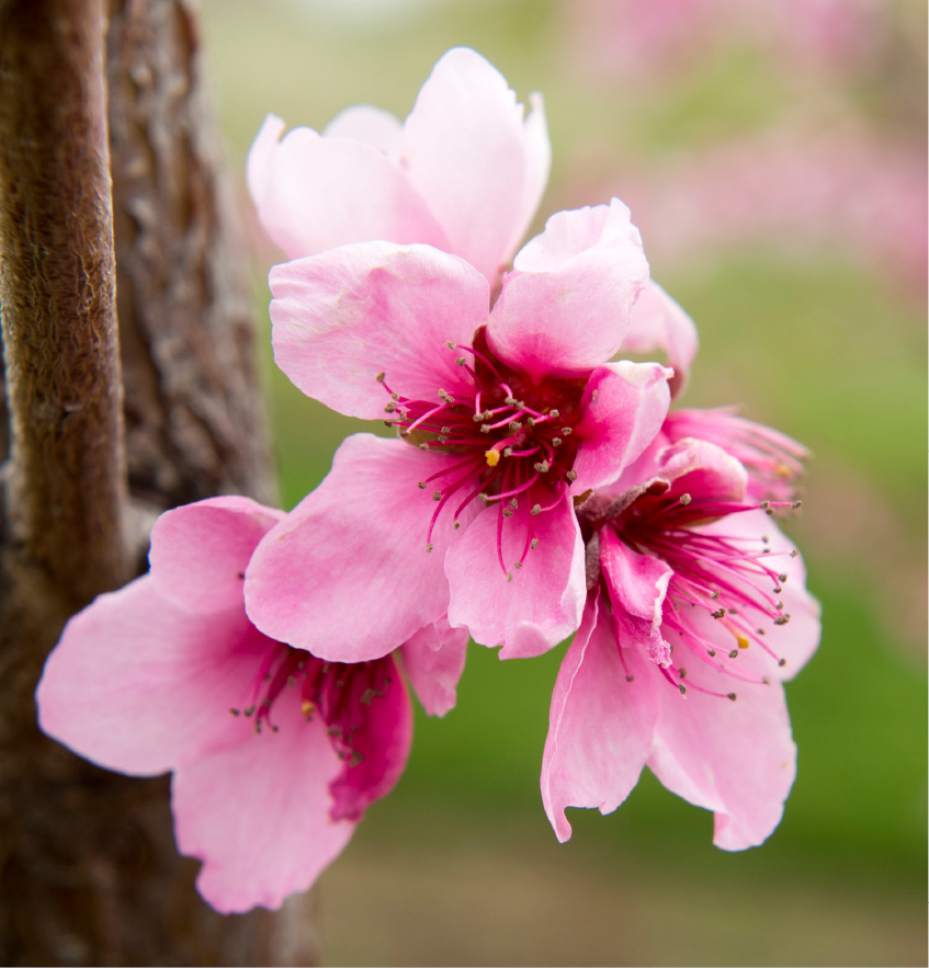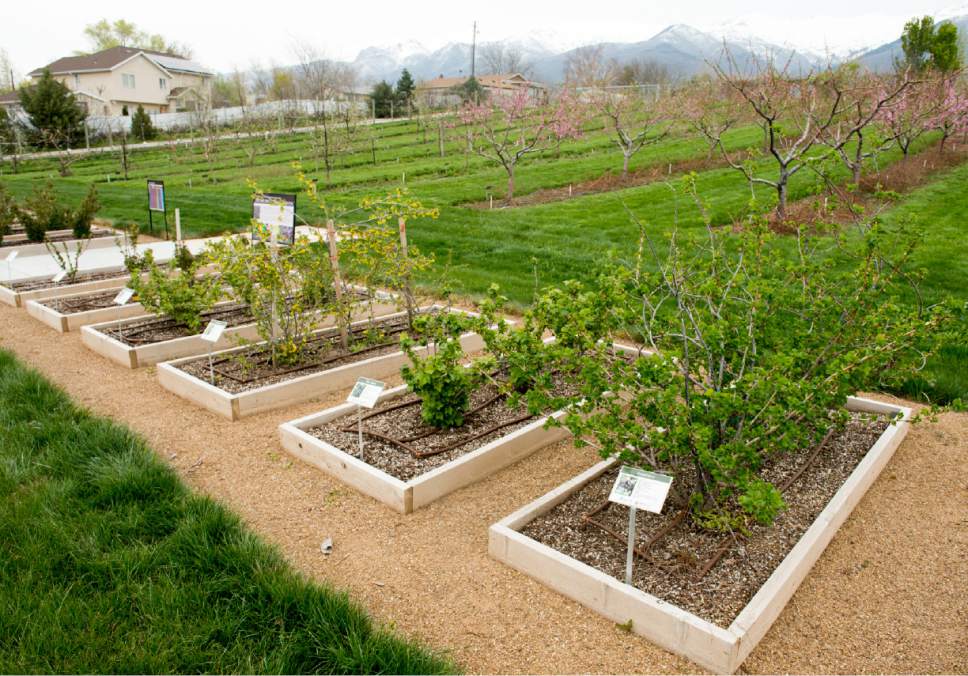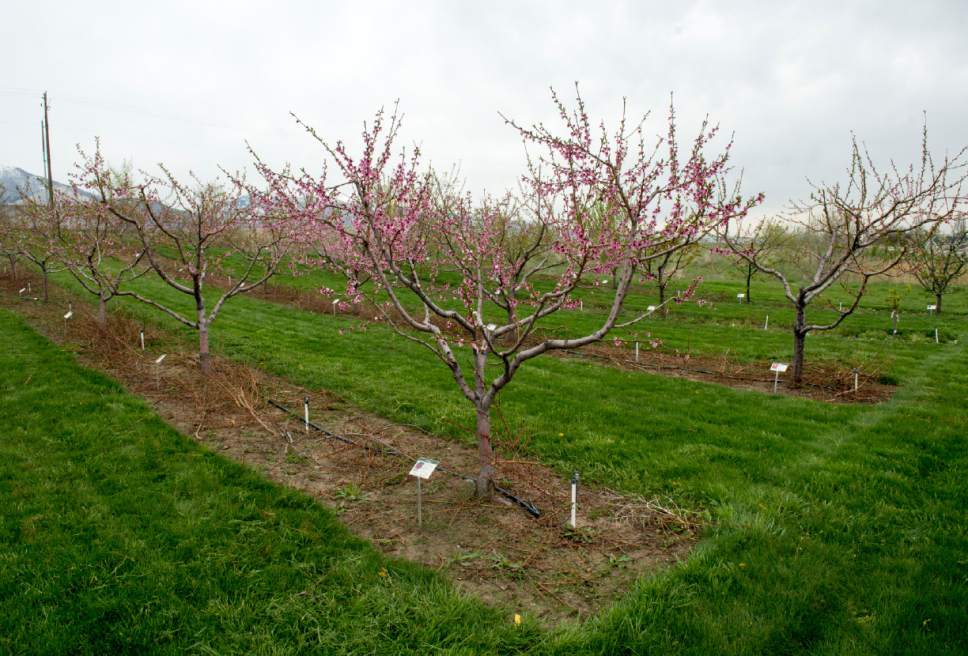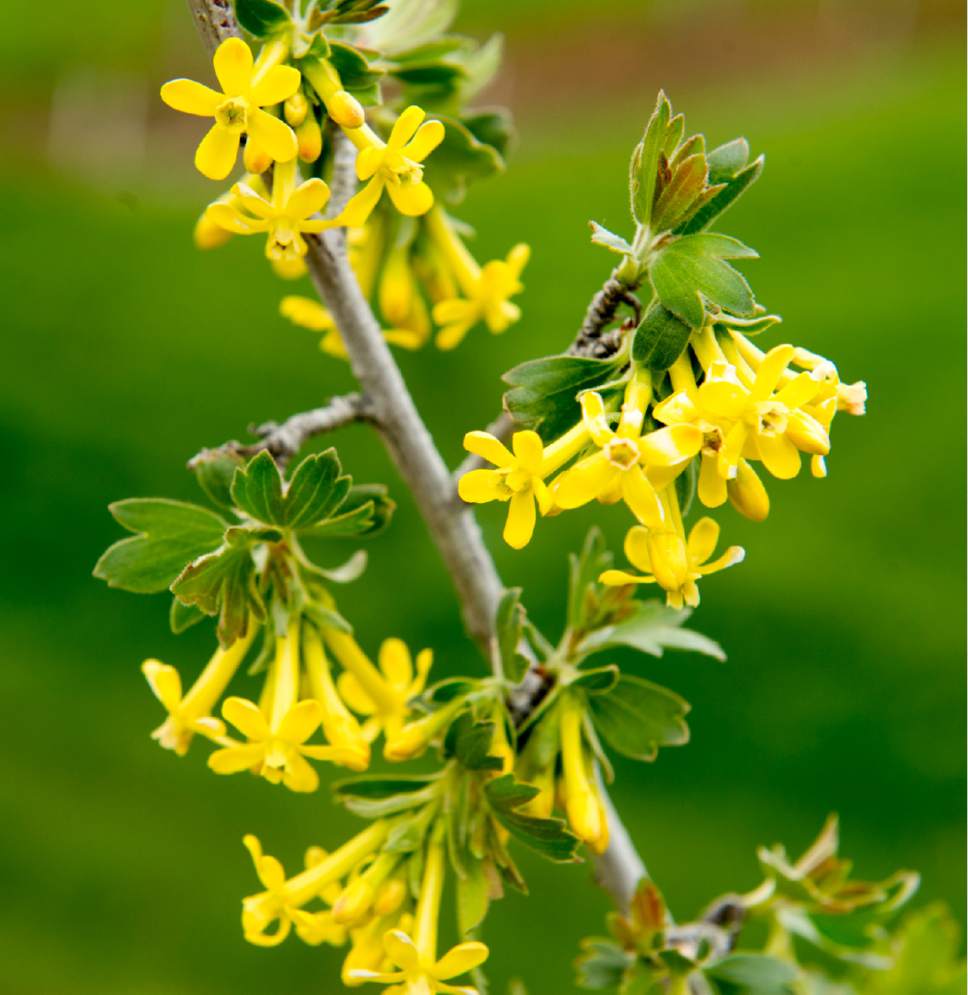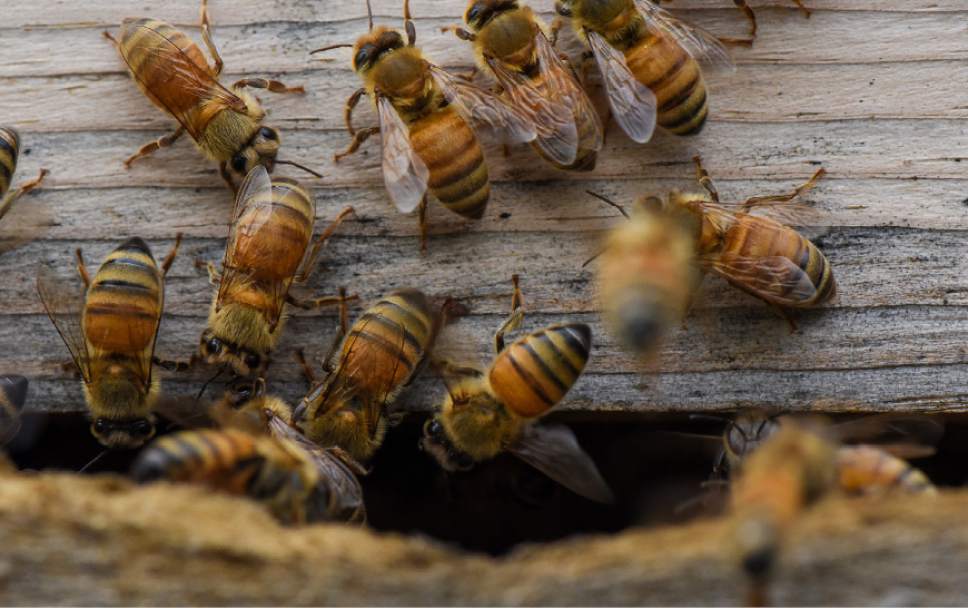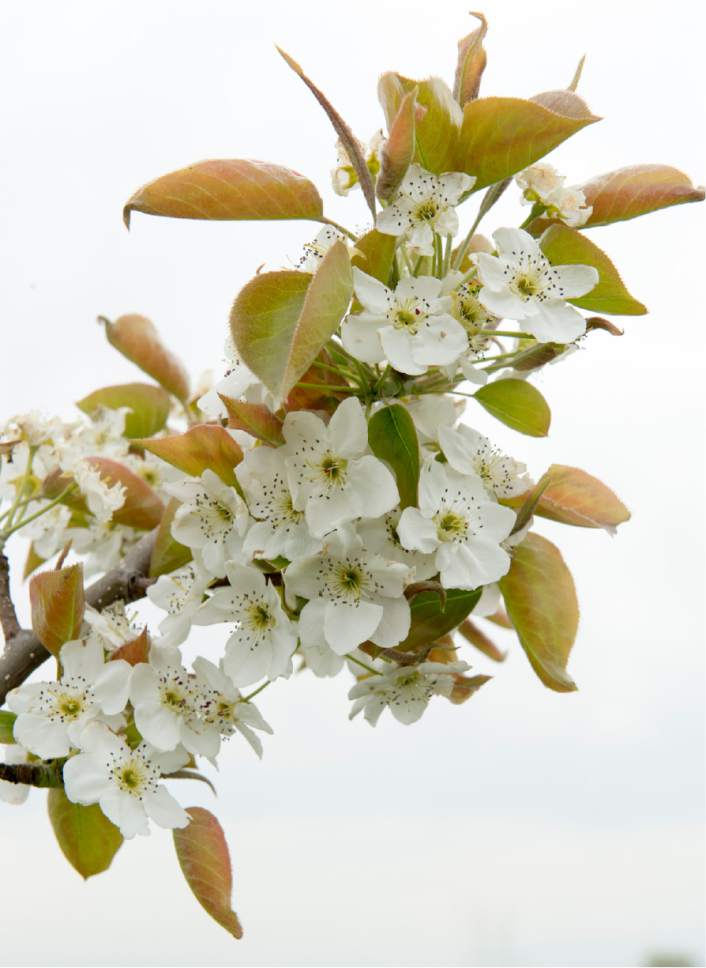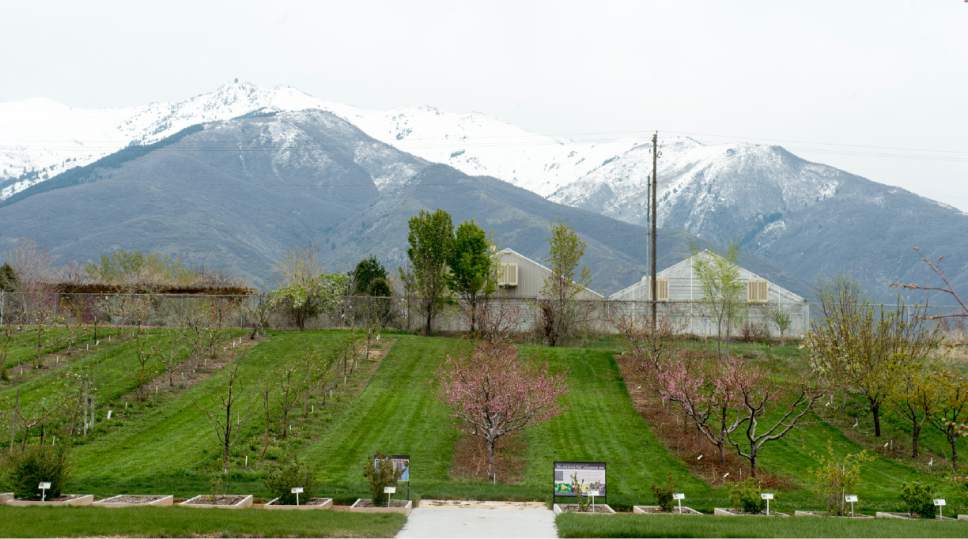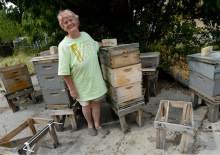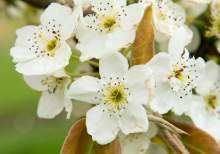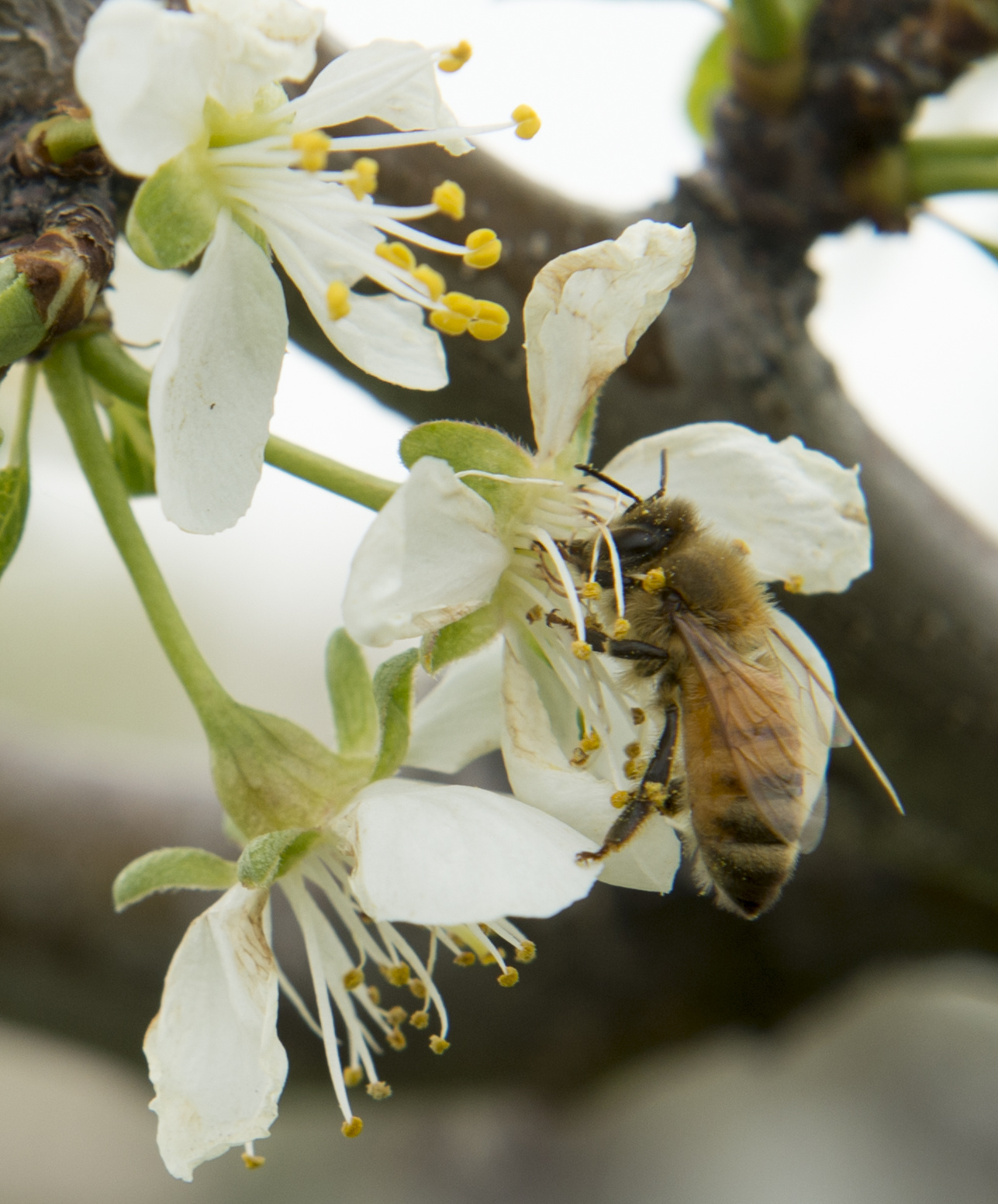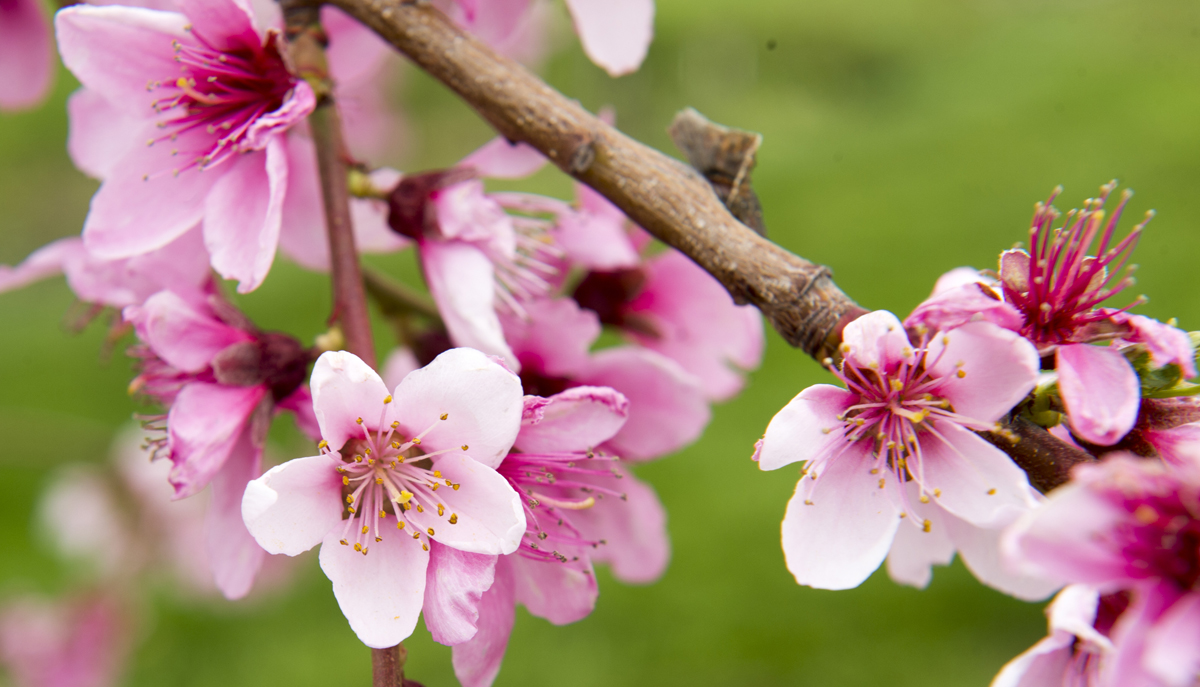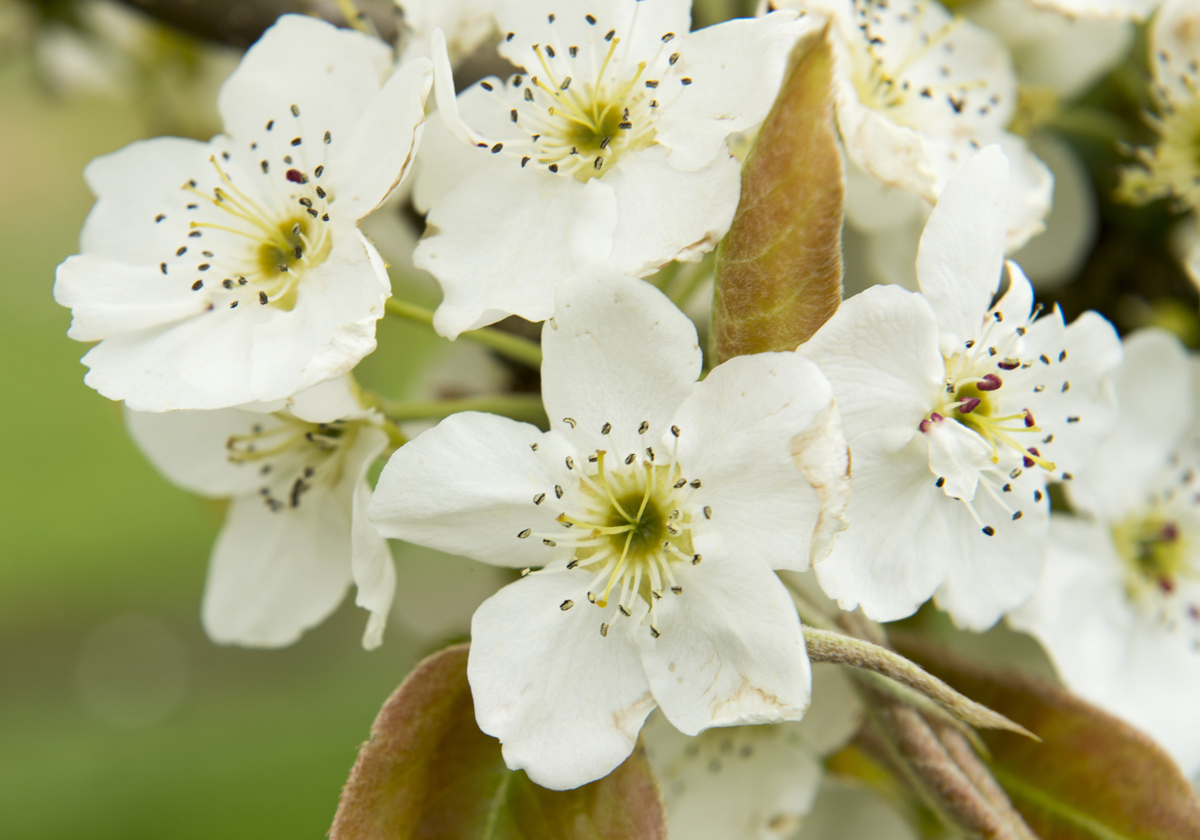This is an archived article that was published on sltrib.com in 2017, and information in the article may be outdated. It is provided only for personal research purposes and may not be reprinted.
Gardeners hoping to attract pollinators to their yards start envisioning rows of brightly colored blossoms this time of year.
But for those really wanting to nurture bees, experts say it's what goes on the garden beds, rather than what's planted in them, that may make the biggest difference.
Flowers are important to bees, and bees to flowers. About 80 percent of the world's fruit and nut crops are pollinated by honeybees, said Jaydee Gunnell, a regional horticulturist at Utah State University who also teaches classes on beekeeping.
But those same crops are often treated heavily with insecticides, Gunnell said, many of which are highly toxic to bees. Homeowners should "never spray while things are in bloom, when the bees are attracted to the flowers," he said.
Some experts believe that the overuse of insecticides may contribute to colony collapse disorder, a poorly understood phenomenon in which the majority of the worker bees in a hive disappear, leaving the queen and immature bees behind to starve.
Though researchers have yet to identify the exact cause of the disorder, colony collapse is sometimes blamed for the rapid decline of bee populations in the U.S. The condition was thought to be responsible for the death of 60 percent of hives lost in 2008, though the percentage of hive deaths attributed to colony collapse appears to have dropped by more than half in recent years.
Michael Stephenson, a professional beekeeper based in Delta and president of the Utah Beekeepers Association, said he has accepted that losing his bees to widespread insecticide use is just a fact of life.
On a commercial scale, Stephenson said, whether or not homeowners grow flowers in their yards doesn't have much impact. Bees will typically only forage within a few miles of their home base, he said, and "I can't put 80 hives across the road from your house."
Insecticides, on the other hand, can affect his hives, Stephenson said. Because his bees are typically located in rural areas, he asks farmers to notify him when they intend to spray their crops, so that he can move his hives elsewhere.
"I don't like saying don't spray, because people have to do what they have to do," Stephenson said. "Beekeepers have to be tolerant of people taking care of their own property."
Utah's bee populations are generally doing well, Stephenson said, compared to national averages.
But he and other beekeepers have struggled in recent years. Last year was particularly rough, Stephenson said, and his theory is that drought conditions had an effect.
If gardeners want to help bees thrive, Gunnell said, they should re-evaluate their pest-control methods. It can be easy to reach for chemical sprays, but there is often a nontoxic solution.
Take aphids, for example. "Aphids you can control with a hard stream of water, and just wash them off the plant," Gunnell said.
USU has fact sheets detailing various methods for controlling specific pests, available here.
When chemicals are necessary, Gunnell said homeowners can protect bees by checking product labels for bee-specific warnings.
How you spray also makes a difference, Stephenson said.
"If people spray early morning or in the evening, those are the better times to spray," he said. "If you spray in the middle of the day and the bees come back immediately after that, then, yes, you will kill the bees."
Denise Hunsaker, a hobbyist who keeps bees in her Salt Lake City backyard and a member of the Wasatch Beekeepers Association, said she commonly advises new beekeepers to give their neighbors a jar of honey and a card with contact information and advice about insecticides.
"It benefits everyone, especially the beekeepers, if they know you have bees in your yard," Hunsaker said.
Should gardeners want to extend an invitation to their neighbor's bees, Hunsaker recommends residents "plant, and don't plant just a little bit. Plant a lot."
Some flowering plants are better than others, she said. Bees prefer purple and yellow blooms, but don't see the color red — so many common blossoms, such as roses, are not helpful.
Salvia seems to be one of her bees' favorites, Hunsaker said, along with Russian sage, lavender, sunflowers, calliopsis and even dandelions. Flowering vegetables will also draw bees, as will many herbs, especially catnip and thyme. Gunnell also recommends clover, berries and flowering trees.
Keep in mind that if you're planting for bees, Hunsaker said, that pollinators need food year-round.
She recommends a selection of plants so that some flower in spring, some in summer and some in the fall. Planting for late-summer blooms is especially important in Utah, where plants tend to be less inclined to flower in July and August.
epenrod@sltrib.com
Twitter: @EmaPen
—
Bee-friendly garden additions:
Berries (raspberries, etc)
Butterfly bush
Calliopsis
Catnip
Chicory
Clover
Fruit trees
Lavender
Linden
Maple
Russian sage
Salvia
Sunflowers
Thistle
Thyme



